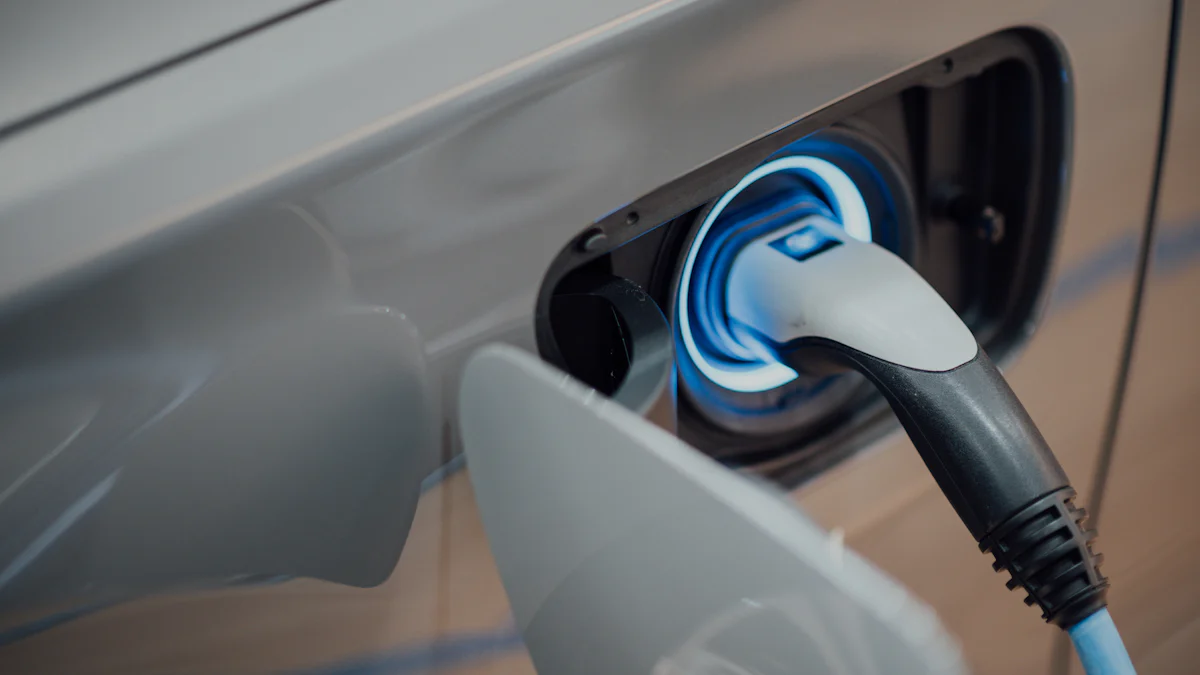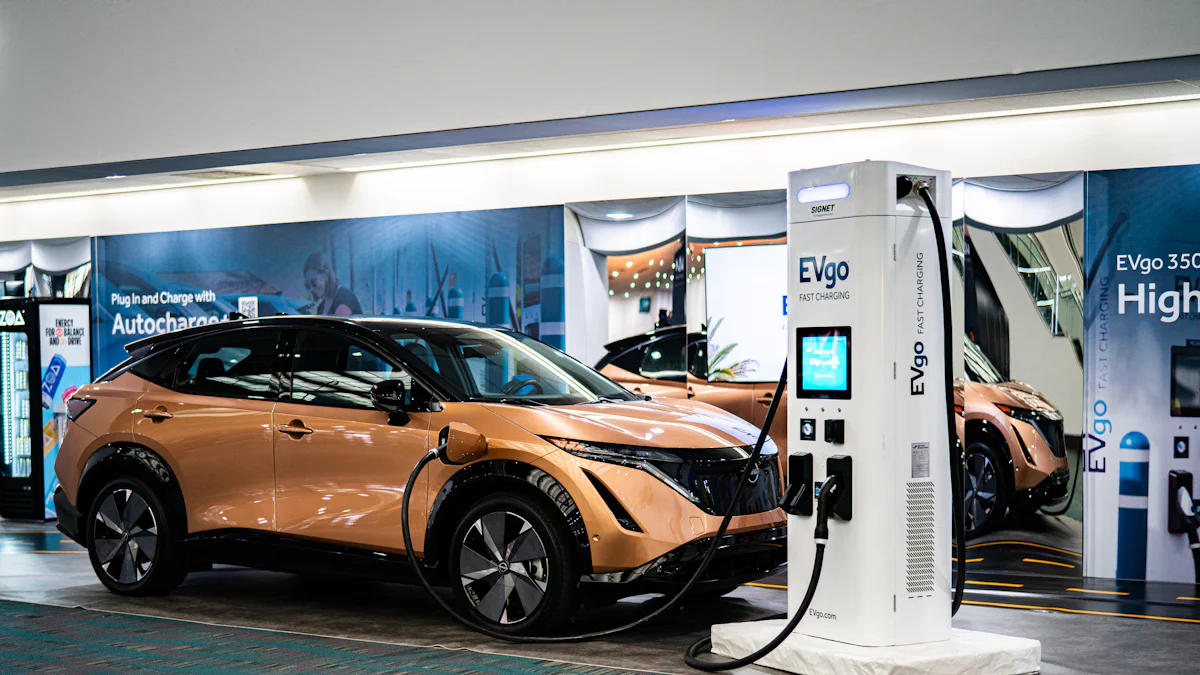Understanding the Types of EV Charging Stations

Understanding Charging Stations is crucial for all electric vehicle (EV) enthusiasts. With various types available, including Level 1, Level 2, and Level 3 chargers, knowing the differences can significantly impact your charging experience. This blog provides an insightful look into the distinct features of each type, helping you make informed decisions about your EV charging needs.
Level 1 Charging Stations

Definition and Usage
A Level 1 Charging Station is a fundamental charging option that connects to a standard 120-volt wall socket. This type of station is commonly utilized in residential settings, offering a convenient solution for EV owners without the need for specialized infrastructure. When plugged into a Level 1 charger, an electric vehicle can gain approximately 3 to 5 miles of driving range per hour of charging. While it may not be the fastest charging method available, Level 1 stations are ideal for daily top-offs or shorter commutes.
Conventional 120-volt wall socket
The Level 1 Charging Station's compatibility with a conventional household outlet makes it accessible to a wide range of users. Its simplicity allows for easy installation in various locations, providing EV owners with the flexibility to charge their vehicles at home without requiring complex setups.
Charging speed and time
Although Level 1 charging may take longer compared to higher-level chargers, it remains a practical choice for overnight charging scenarios. A full charge using a Level 1 station typically takes around eight hours, making it suitable for individuals who primarily use their EVs for local trips or have extended periods between drives.
Advantages and Disadvantages
When considering Charging Stations, understanding the benefits and limitations of each type is crucial in selecting the most suitable option based on individual needs.
Accessibility and convenience
The accessibility of Level 1 Charging Stations is unmatched, as they can be easily integrated into existing electrical systems at homes or workplaces. This convenience ensures that EV owners can maintain their vehicles' battery levels without investing in specialized infrastructure or additional equipment.
Limitations in charging speed
One notable drawback of Level 1 stations is their relatively slower charging speeds compared to higher-level alternatives. Due to the lower power output from standard outlets, these chargers may not be ideal for users with high daily mileage requirements or those seeking rapid recharging capabilities.
Level 2 Charging Stations
Level 2 Charging Stations serve as an essential charging solution for electric vehicle (EV) owners, offering a more efficient and faster charging experience compared to Level 1 stations. These stations are equivalent to residential charging setups, providing a reliable method to power up your EV effectively.
Definition and Usage
Equivalent to residential charging stations
Level 2 Charging Stations mirror the convenience of having a personal charging station at home. By utilizing 208-240 volt AC power, these stations can fully charge an EV battery in approximately 4 to 6 hours. This makes them an ideal choice for individuals looking to charge their vehicles overnight or during work hours without long waiting periods.
Charging speed and time
The increased power output of Level 2 chargers significantly reduces the time needed for a full charge compared to Level 1 options. With the ability to deliver around 7.4 kW, these stations offer a faster and more efficient way to keep your EV ready for daily commutes or longer journeys.
Advantages and Disadvantages
Faster charging compared to Level 1
One of the primary advantages of Level 2 Charging Stations is their enhanced charging speed, allowing EV owners to top up their batteries quickly. This feature is particularly beneficial for individuals with busy schedules who require frequent access to charged vehicles throughout the day.
Installation requirements
Installing a Level 2 charger typically involves setting up dedicated electrical circuits capable of handling higher voltage levels. While this may require professional assistance for proper installation, the long-term benefits of faster and more convenient charging outweigh the initial setup complexities.
Level 3 Charging Stations (DC Fast Chargers)

Definition and Usage
Level 3 Charging Stations, also known as DC Fast Chargers, represent the pinnacle of EV charging technology. These stations are designed to provide the fastest way to charge EVs, catering to drivers who require quick and efficient charging solutions. Unlike Level 1 and Level 2 chargers, which operate on alternating current (AC), Level 3 chargers deliver power in direct current (DC), allowing for rapid replenishment of an electric vehicle's battery.
Fastest way to charge EVs
The primary advantage of Level 3 Charging Stations is their unparalleled speed in recharging electric vehicles. With power outputs ranging from 50 kW to 400 kW, these chargers can significantly reduce the time needed to top up a vehicle's battery compared to lower-level alternatives. This makes them ideal for long-distance travelers or individuals with demanding schedules who cannot afford lengthy charging stops.
Different systems (CCS, CHAdeMO, J3400)
Level 3 Charging Stations utilize various systems to facilitate charging compatibility with different EV models. The SAE Combined Charging System (CCS), CHAdeMO, and J3400 are among the most common standards used in fast-charging infrastructure. Each system offers unique features and benefits, ensuring that a wide range of electric vehicles can access high-speed charging capabilities across different regions.
Advantages and Disadvantages
When considering the adoption of Level 3 Charging Stations, it is essential to weigh both the advantages and disadvantages associated with this advanced charging technology.
Rapid charging capabilities
The standout feature of Level 3 chargers is their rapid charging capabilities, enabling EV owners to quickly replenish their vehicle's battery levels during extended journeys or time-sensitive trips. This efficiency ensures minimal downtime during charging sessions, allowing drivers to resume their travels promptly without significant delays.
Cost and infrastructure requirements
While Level 3 Charging Stations offer unparalleled speed and convenience, they often come with higher installation costs compared to lower-level chargers. Additionally, the infrastructure required to support these powerful chargers may be more complex and demanding, necessitating strategic planning and investment in electrical upgrades. Despite these challenges, the increasing availability of Level 3 chargers signifies a promising future for widespread adoption as electric vehicle technology continues to evolve.
To summarize, the blog explored three main types of EV charging stations: Level 1, Level 2, and Level 3. Each type offers distinct features and benefits tailored to different charging needs.
Choosing the right charging station is crucial as it directly impacts the efficiency and convenience of recharging your electric vehicle. Understanding the differences between these stations ensures a seamless charging experience.
Looking ahead, future developments in EV charging technology are promising. With an estimated need for 222 million chargers by 2034 and a significant investment exceeding $123 billion in global infrastructure, the industry is rapidly evolving to meet the growing demands of electric mobility.
See Also
Choosing the Best Drone-Mountable Thermal Cameras for FPV
Comparing Drone FPV Thermal Cameras and iSun Analog Technology
Selecting the Right Thermal Camera for Your Drone
Contact Us: Ms. Coco Huang
E-mail: sales@iasun.cn
WhatsApp/Wechat: +86 13510421923

